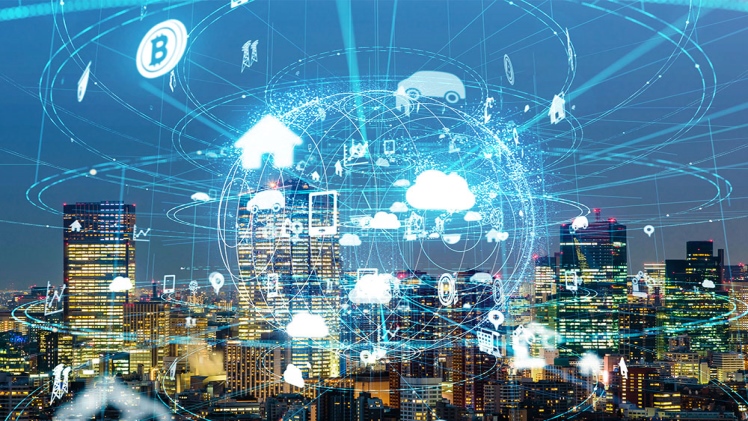In the fast-paced and dynamic realm of technology, the landscape is continually shaped by the latest trends and transformative innovations. This article delves into the trends that are currently driving the tech industry, unraveling the transformations that code is bringing to the future. From artificial intelligence and the rise of edge computing to the evolution of programming languages, we explore the exciting developments that are steering us toward a future where code is at the forefront of progress.
I. Artificial Intelligence (AI) and Machine Learning (ML):
At the forefront of the tech landscape, artificial intelligence and machine learning are catalyzing transformative changes. AI algorithms, powered by machine learning, are becoming increasingly sophisticated, enabling systems to analyze vast datasets, recognize patterns, and make decisions with human-like intelligence. From virtual assistants and recommendation systems to predictive analytics, AI is permeating various sectors, revolutionizing the way we interact with technology.
As the field of artificial intelligence and machine learning (AIML) continues to advance, the integration of intelligent systems into everyday applications is becoming increasingly prominent, unlocking new possibilities and enhancing efficiency across various industries. Enrolling in a quality AIML course can provide individuals with the necessary knowledge and skills to harness the full potential of AIML technologies, including machine learning, deep learning, reinforcement learning, and unsupervised learning. These courses offer a solution for individuals and organizations aiming to stay at the forefront of technological innovation and leverage AIML’s capabilities effectively.
II. Edge Computing: Decentralizing Data Processing
The emergence of edge computing is a transformative trend reshaping the traditional cloud-centric model. Edge computing involves processing data closer to the source of data generation, reducing latency and enhancing real-time responsiveness. This paradigm shift is particularly crucial for applications requiring low latency, such as autonomous vehicles, IoT devices, and augmented reality.
By decentralizing data processing to the edge, the tech landscape is adapting to the increasing demand for faster and more reliable computing. This trend is poised to redefine how data is managed, processed, and delivered, providing a more efficient and responsive computing experience.
III. Quantum Computing: Unleashing Unprecedented Computational Power
Quantum computing represents a revolutionary leap in computational capabilities. Unlike classical computers that use bits to represent information, quantum computers leverage qubits, allowing for simultaneous states and exponentially increasing computing power. Although still in its infancy, quantum computing holds the promise of solving complex problems, such as cryptography, optimization, and drug discovery, that are currently beyond the reach of classical computers.
As quantum computing matures, it is set to transform the tech landscape by unlocking new possibilities for solving problems that were once deemed impractical. Researchers and tech companies are racing to achieve quantum supremacy, marking a watershed moment in the evolution of computational technology.
IV. Internet of Things (IoT): Interconnecting the Physical World
The Internet of Things (IoT) continues to be a driving force in the tech landscape, creating a network of interconnected devices that communicate and share data. From smart homes and wearable devices to industrial applications in smart cities and healthcare, IoT is fostering a more connected and data-driven world.
As the number of IoT devices proliferates, the tech landscape is witnessing advancements in edge analytics, security protocols, and the standardization of communication protocols. These developments are crucial for harnessing the full potential of IoT, shaping a future where devices seamlessly collaborate to enhance efficiency, convenience, and sustainability.
V. Progressive Web Applications (PWAs): Enhancing User Experiences
Progressive Web Applications (PWAs) are redefining the way users interact with web applications. PWAs combine the best features of websites and native applications, providing a seamless and responsive user experience across various devices. With features like offline functionality, push notifications, and faster load times, PWAs are becoming a prominent trend in the tech landscape.
As the demand for mobile-first and user-centric experiences grows, PWAs are gaining traction across industries, from e-commerce to content delivery. The tech landscape is evolving to accommodate this shift, emphasizing the importance of creating web applications that prioritize speed, responsiveness, and a native app-like experience.
VI. DevOps and Continuous Integration/Continuous Deployment (CI/CD):
DevOps, a cultural and operational approach to software development, aims to foster collaboration between development and operations teams, streamlining the software delivery process. The integration of DevOps practices with Continuous Integration (CI) and Continuous Deployment (CD) pipelines has become a staple in the tech landscape.
CI/CD pipelines automate the building, testing, and deployment of software, enabling faster and more reliable release cycles. This trend is transforming the way software is developed, tested, and deployed, enhancing the agility and efficiency of development teams. As the tech landscape embraces DevOps and CI/CD, organizations are better positioned to deliver high-quality software at a faster pace.
VII. Programming Language Evolution:
The evolution of programming languages is an ever-present trend in the tech landscape, reflecting the dynamic nature of software development. Modern languages like Python, JavaScript, and TypeScript are gaining prominence due to their versatility, readability, and extensive ecosystems. These languages are well-suited for emerging trends such as AI, web development, and data science.
Moreover, the rise of languages like Rust and Kotlin demonstrates a shift towards addressing specific challenges in system-level programming and Android app development, respectively. The tech landscape continues to adapt to the evolving needs of developers, fostering a diverse and vibrant ecosystem of programming languages.
VIII. Cybersecurity: Fortifying Digital Defenses
With the increasing sophistication of cyber threats, cybersecurity remains a paramount concern in the tech landscape. As technology evolves, so do the tactics of malicious actors seeking to exploit vulnerabilities. The tech landscape is responding by implementing advanced cybersecurity measures, including artificial intelligence-driven threat detection, encryption protocols, and proactive security practices.
Cybersecurity is integral to safeguarding digital assets, protecting user privacy, and ensuring the integrity of software systems. The evolving threat landscape necessitates continuous innovation in cybersecurity measures to stay ahead of potential risks and vulnerabilities.
IX. Ethical Considerations and Responsible Tech:
As technology continues to advance, ethical considerations and responsible tech practices are gaining prominence in the tech landscape. Issues such as data privacy, algorithmic bias, and the ethical use of emerging technologies are sparking conversations about the impact of tech on society. The tech landscape is witnessing a growing commitment to ethical principles, transparency, and responsible innovation to ensure that technology benefits humanity without causing harm.
Conclusion:
The tech landscape is a dynamic and ever-evolving canvas, shaped by the currents of innovation and the transformative power of code. From artificial intelligence and quantum computing to the evolution of programming languages and responsible tech practices, the trends unfolding in the tech landscape are reshaping the way we live, work, and interact with the world. As we navigate this code-driven future, the key lies in embracing these trends with a forward-looking mindset, acknowledging the ethical considerations, and fostering a tech landscape that prioritizes inclusivity, sustainability, and positive societal impact. In the world of technology, where code is the language of progress, the future promises a tapestry of possibilities waiting to be woven by the hands of visionary developers, engineers, and innovators.

